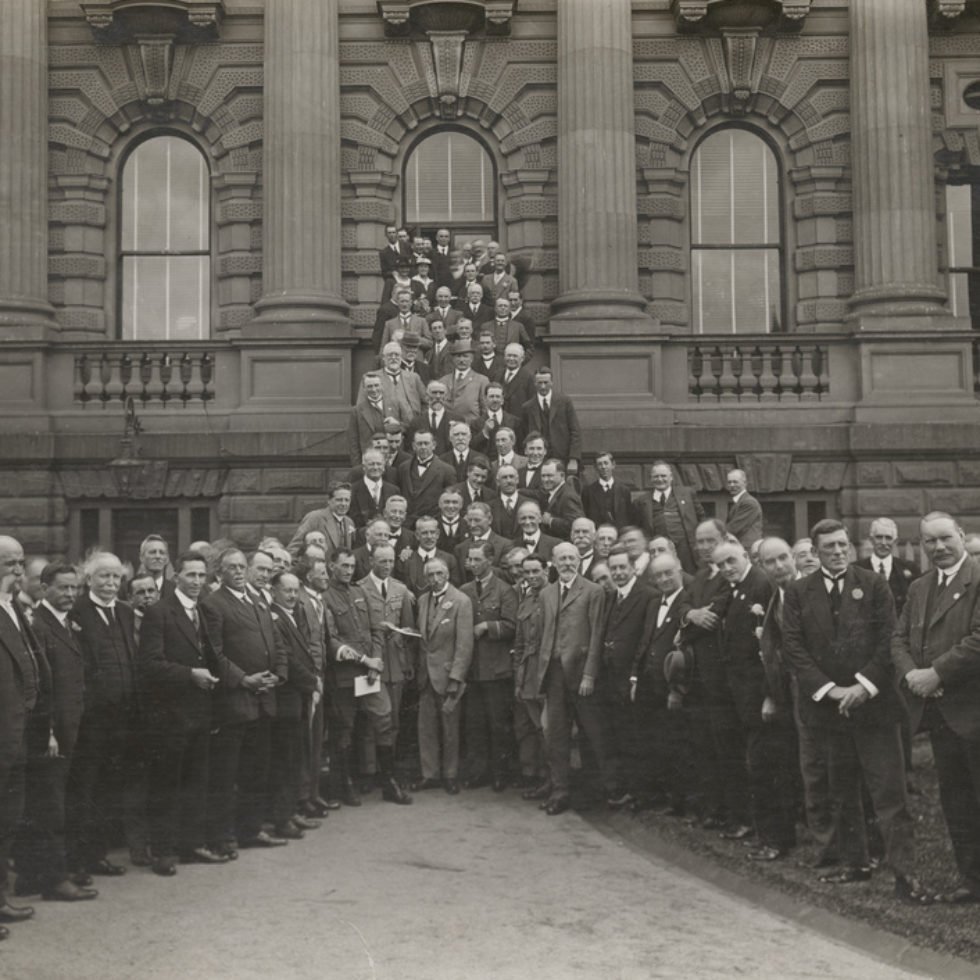
25 February, 1920
The Vimy crew, with cameraman Frank Hurley in the front cockpit, left Henty at 6am bound for Point Cook. Aircraft spare parts and their personal kit had been offloaded to lighten the Vimy for a one-engine cruise due to an oil pressure problem with the starboard engine. They arrived at Point Cook at 10.04am after circling central Melbourne, escorted by aircraft from the Central Flying School.
It was now 75 exhausting days since they’d left Darwin on 13 December (after taking only 28 days to cross the world).
It was a subdued welcome, with The Argus reporting: “…there were not two score of people there…”. Other reports suggested up to 100 people were there, with another couple of hundred outside the gates. Among those waiting to greet them were the Smith brothers’ parents Andrew and Jessie and Wally’s bride Helena, who had come down from Sydney by train. Jim’s parents and his three sisters had also travelled from their home in the Melbourne suburb of St Kilda. They hadn’t seen Jim since before the war.
The Vimy had actually been scheduled to land at Melbourne’s Flemington racecourse the day before. The crowd was so massive and the scenes so chaotic that a 10-year-old boy had been run over and killed.
The crew was first taken to the officers’ mess for a bath and shave, before enjoying a leisurely breakfast with only their relatives and the base officers attending with them. One of the officers was Captain Wrigley, who had flown the BE2e from Pt Cook to Darwin to meet them. His aircraft was parked next to the Vimy as it had been in Darwin.
After breakfast they were motored into town to Parliament House (Jim arrived separately after going home first with his family), and received by the Governor General, Prime Minister Billy Hughes and a vast crowd of military officers and parliamentarians. After a number of speeches, they were photographed on the Parliament House steps and whisked off for lunch at Menzies Hotel.
Two days later Prime Minister Billy Hughes officially presented the crew with their £10,000 prize cheque, which Ross had decided would be shared equally between the four men.
The image top left shows the crew with Australian politicians outside Parliament House in Melbourne (which was then the seat of the national government). [SLSA PRG 18/7/72]
Thanks to Mike Milln from the SA Aviation Museum for his assistance with this post.